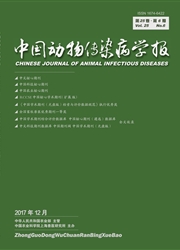

 中文摘要:
中文摘要:
模式识别受体(pattern-recognition receptors,PRRs)中的RIG-I样受体(RIG-I like receptors,RLRs)是细胞质中一类RNA解旋酶,它们可以通过其RNA配体结合病原相关分子模式(pathogen associated molecular pattern,PAMP),识别非自身的病毒RNA。被感染的细胞中,这种相互作用可以通过触发RLRs以及下游信号分子的活化,最终导致I型干扰素的产生和炎性因子的产生,细胞做出抗病毒免疫应答。本文简单介绍了RLR信号通路的组成及其泛素化调控,总结了病毒逃避RLR通路信号转导的机制,最后阐述了NOD样受体(NOD-like receptors,NLRs)通路对RLR通路的影响。通过对RLR信号通路分子在抗病毒免疫调节中的作用了解,可以为控制病毒的感染和免疫调节提供一个新的思路。
 英文摘要:
英文摘要:
The RIG-I-like receptors (RLRs) family of pattern recognition receptors (PRRs) is a group of cytosolic RNA helicase proteins that can identify viral RNA as non-self via binding to pathogen associated molecular pattern (PAMP) motifs within RNA ligands. This interaction then leads to triggering of an innate antiviral response within the infected cells through RLR induction of downstream effector molecules such as type I interferon (IFN) and other proinflammatory cytokines that serve to induce antiviral and inflammatory gene expression. In this paper, the composition of the RLR signaling pathway and regulation of ubiquitination reaction are described briefly. The mechanisms of viruses targeting RLR pathways to escape from the immune response are also summarized. Furthermore, the signaling crosstalk between RLR pathways and NOD-like receptor (NLR) pathways are introduced. Understanding the pivotal role of RLRs in immune regulation and signaling crosstalk in antiviral immunity may provide new insights into therapeutic strategies for the control of virus infection and immunity.
 同期刊论文项目
同期刊论文项目
 同项目期刊论文
同项目期刊论文
 期刊信息
期刊信息
